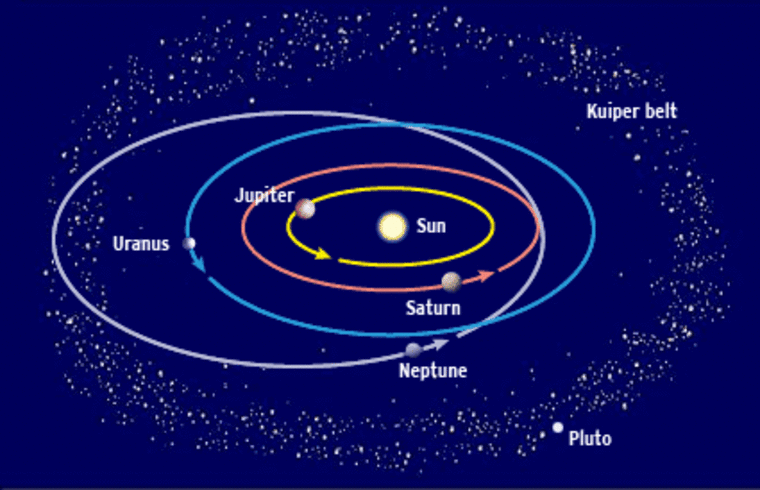Scientists say they have developed a tale of chaos in the early solar system that explains several mysteries about why our cosmic neighborhood turned out the way it did.
"We get so many of the answers right," said Harold Levison of the Southwest Research Institute in Boulder, Colo. "I never dreamed it would be so spectacularly successful."
In a single stroke, he and his colleagues say, the tale answers such questions as:
- What set off an intense asteroid bombardment 3.9 billion years ago that created huge lava-filled basins now visible on the moon and which may have set back the development of life on Earth?
- Why did Jupiter and Saturn leave their circular orbits and take on the more oval paths seen today, and how did their orbits became so tilted compared to other planets?
- Why does Jupiter share its orbit with thousands of asteroids that precede and follow it around the sun?
The work is presented in Thursday's issue of the journal Nature by Alessandro Morbidelli of the Cote d'Azur Observatory in Nice, France, along with Levison and others. They used computer simulations to study how the outer solar system may have developed.
Their favorite scenario follows the generally accepted idea that 4.6 billion years ago, the sun and planets formed from the gravitational collapse of a cloud of gas, dust and ice. But it adopts what Levison called the controversial position that the solar system started out as quite compact. In this scenario, for example, Neptune starts out less than 15 times as far away from the sun as Earth is now, rather than the 23 times other scientists propose.
How did it happen?
So the question was what would happen over eons as the planets followed circular orbits, surrounded by a huge ring of planetary rubble, chunks measuring up to hundreds of miles across. As the planets and chunks of rubble exerted their gravitational tugs on each other, what would change?
Here's what the scenario suggests:
As the planets tugged on the rubble, the rubble tugged back, and that nudged Uranus, Neptune and Saturn outward from the sun and Jupiter inward, as previous research has suggested. That in turn affected how long each planet took to complete an orbit of the sun, since a wider orbit takes longer. At some point, Saturn started taking exactly twice as long as Jupiter to complete a lap.
Because of their tugs on each other, Jupiter and Saturn began to leave circular orbits and follow more oval-shaped paths similar to what's observed today. That wreaked gravitational havoc on the much less massive Uranus and Neptune, making their orbits "totally nuts," Levison said. It sent the two planets outward and into the ring of planetary rubble which, as Levison put it, went "kaplooey."
It's as if Saturn were a bowler, Uranus or Neptune the ball, and the rubble chunks the pins, he said. The gravity of the intruding planets scattered the rubble, and one result was the bombardment of Earth and the moon.
Fine-tuning the tilts
The rubble's gravitational tugs on Uranus and Neptune eventually nudged those planets into the orbits seen today, according to the scenario, which also produced the observed tilts of the orbits of all four planets in the story.
The work also explains the presence and highly tilted orbits of Jupiter's "Trojans," asteroids that share essentially the same orbit as Jupiter. While some scientists have suggested they formed near Jupiter, the scenario suggests they developed far away and were captured in Jupiter's orbital path just after Saturn and Jupiter hit their crucial 2-to-1 ratio in orbit times.
Renu Malhotra, a professor of planetary sciences at the University of Arizona, called the work "very interesting and provocative," but said it's probably not the last word on the subject.
